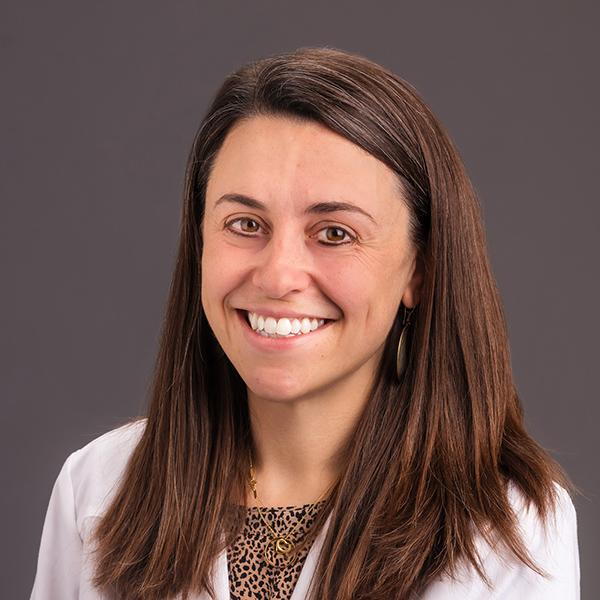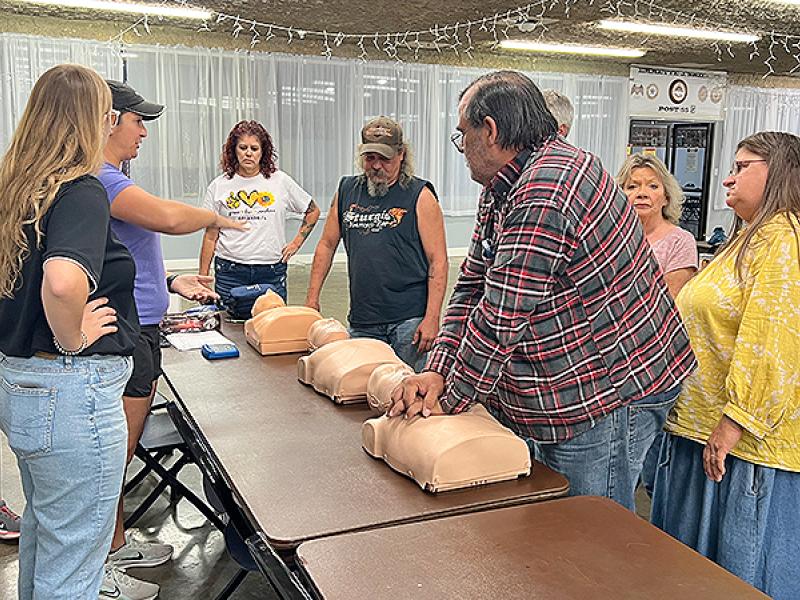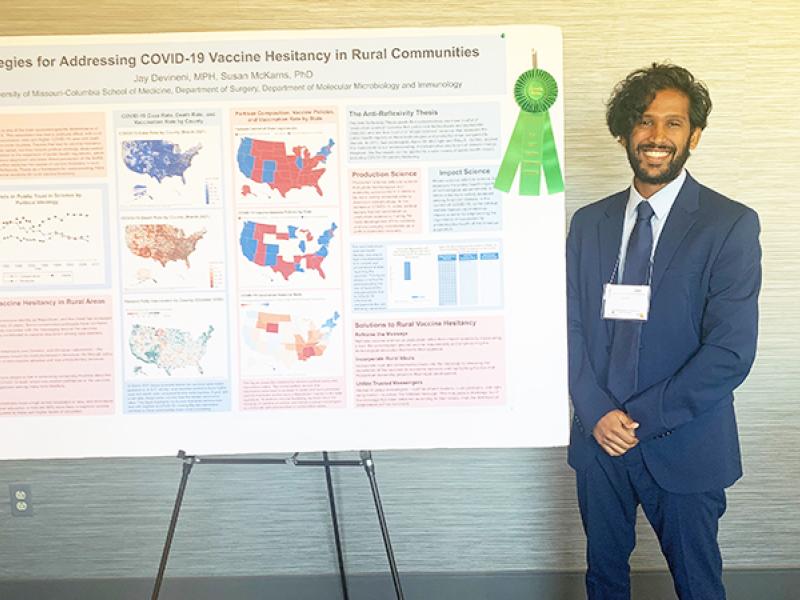As the state's leading educator of physicians practicing in Missouri, the MU School of Medicine is in a key position to improve the supply and distribution of physicians in rural Missouri.
The Rural Scholars Program is designed to offer medical students interested in rural practice a variety of experiences including lectures, mentoring, and clinical programs centered around rural care. Students interested in the Rural Scholars Program will apply in their first year of medical school.
Student Benefits
Rural Missouri Experience
- Experience the rewards and challenges of working and living in a rural community
- Examine rural health disparities and quality of life concerns within a specific region of Missouri
- Develop an ongoing relationship with hospital systems and health care providers in rural Missouri
- Explore potential future practice locations
Clinical Experience
- Participate in a unique early clinical experience after the first year of medical school to enhance understanding of rural medicine and practice history taking and physical exam skills
- Participate in high-volume, high-value rural educational experiences across all four years of medical school through the Rural Scholars Program
- Complete 3 core clerkships during third year in a rural community while working one-on-one with MU-appointed community-based faculty, or participate in the longitudinal integrated clerkship (LINC)
- Participate in community-based research through the development of a community integration project
- Complete one four-week elective in a rural community to develop a deeper understanding of rural practice and assist in solidifying specialty selection
Lasting Benefits
- Prepare for rural practice through ongoing clinical exposure
- Develop strong, supportive relationships with other students interested in rural care
- Receive personal mentoring from a rural community-based faculty member
- Participate in the annual rural lecture series for ongoing exposure to topics in rural health
- Receive a program completion scholarship during the fourth year of medical school
- Receive personalized assistance and support from Rural Scholars Program faculty and staff
- Receive potential scholarships from participating hospitals and/or health systems
Student Expectations
Students are committed to:
- Be assigned to a region and continuity training site where all clinical training programs will be completed
- Attend six evening rural lectures during medical school
- Establish a mentor relationship with a designated rural faculty member during the first year of medical school
- Participate in the Summer Community Program for six weeks or complete four weeks of the Summer Community Program and the Clinical Rural Immersion Program after the first year of medical school
- Complete three rural clerkships or the longitudinal integrated clerkship (site dependent), and a community integration project during the third year of medical school
- Complete one rural elective during the fourth year of medical school
Application and Selection Process
The application process is explained, and information is distributed during orientation in the first year of medical school. The program is open to all first-year medical students. Selection for the Rural Scholars Program is based primarily on interest in serving underserved populations, learning about rural health disparities in Missouri, and potential rural practice. Up to 25 students can be selected to participate in the program each year.
If you have questions about the program, or would like to receive a link to the application, please email ruralscholars@health.missouri.edu.
Rural Lecture Series
Annual lecture series focused on relevant rural health topics. Experts in rural medicine speak on a variety of topics, including models of addressing behavioral and women’s health in rural areas, rural leadership, and community engagement, the use of telemedicine in rural areas, the opioid epidemic in rural Missouri, and many more.
Rural Physician Mentoring
Students accepted into the Rural Scholars Program have a unique opportunity to be matched with a rural physician mentor from their continuity community/region. This mentoring relationship will provide students a resource to discuss numerous topics including professional development, specialty choice, career planning/guidance, rural population health and health disparities, and common acute and chronic clinical problems in rural communities from an experienced rural physician.
Continuity Region and Training Site
Rural Scholars will be assigned to a region and training site where they will complete all clinical training programs. Rural Scholars will develop a more in-depth connection with and understanding of the culture, health disparities, and health-care resources in the region.
There are five continuity regions: Mid-Missouri, Northeast Missouri, Northwest Missouri, Southeast Missouri, and Southwest Missouri. Each region has one or more training site(s).
Mid-Missouri third-year training sites
- Bothwell Regional Health Center-Sedalia (LINC)
- Lake Regional Health System-Osage Beach
Northeast Missouri third-year training site
- Hannibal Regional Hospital-Hannibal (LINC)
Northwest Missouri third-year training site
- Mosaic Life Care-St. Joseph (LINC)
Southeast Missouri third-year training sites
- Parkland Health Center-Farmington
- St. Francis Medical Center-Cape Girardeau
Southwest Missouri third-year training sites
- Cox Health-Branson
- Citizens Memorial Healthcare-Bolivar
- Ozarks Medical Center-West Plains
Summer Community Program
Students work with one or more community-based physicians in a primary care setting and experience the benefits and rewards of rural practice. Students perform appropriately focused medical histories, physical exams, and other clinical tasks under the supervision of the physician.
Learn More About the Program
Rural Clerkship Program
Students are given the unique opportunity to live and work in a rural community to gain personal experience of the rewards of rural practice. Community-based physicians serve as faculty and role models, guiding students through the program and serving as mentors for professional and personal development. In busy rural settings, students care for a large number of patients and are able to experience continuity of care.
Learn More About the Program
Rural Longitudinal Integrated Clerkship (LINC)
The Rural Longitudinal Integrated Clerkship (LINC) includes medical students participating in patient care over time, allowing enduring learning relationships to develop with patients and physician-teachers. Students will meet required core clinical competencies in multiple disciplines through longitudinal experiences over the course of the clinical training year. In contrast to a block curriculum, students meet and follow their patients across multiple settings of care and different disciplines.
Community Integration Project
Students research community health needs in a region of the state and develop and evaluate a community research project to address the identified needs. An academic poster and paper are submitted to reflect on the project.
Rural Elective Program
The Rural Elective Program provides students with an additional rural clinical experience during their final year of medical school, which helps the students explore and solidify their commitment to practicing rural medicine.
Learn More About the Program







